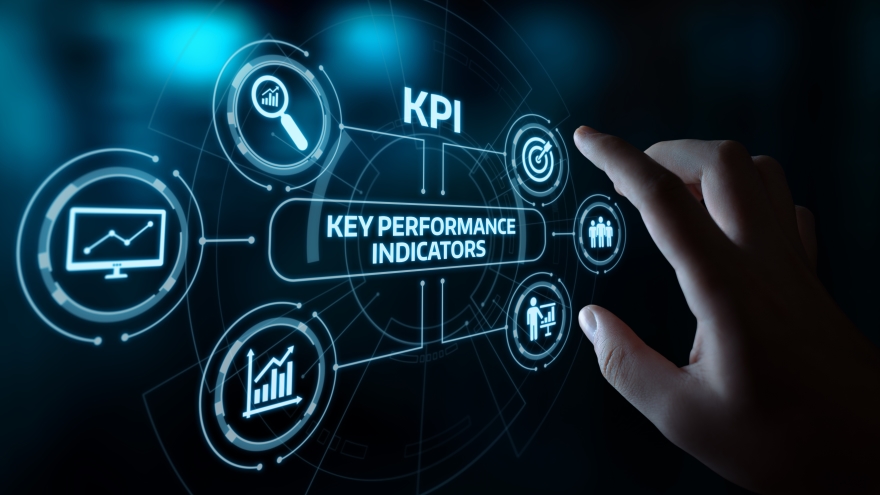COMMENTARY: Navigating dealership success through KPIs

As a moderator of 20 Groups for independent retail dealers, my role provides a unique vantage point into the challenges faced by dealerships.
Whether through in-person consultations or within the collaborative 20 Group space, those shared experiences offer profound insights into the daily triumphs and tribulations of dealers.
A recurring observation that stands out is the lack of awareness concerning crucial dealership metrics.
When we mention “numbers,” we’re referring to key performance indicators: measurable indicators of performance over time for specific objectives. KPIs are instrumental in focusing on strategic and operational improvements, facilitating decision-making and directing attention to critical aspects of the business.
The reality is, as the saying goes, you don’t know what you don’t know, and ignorance can lurk where we least expect it. When consulting at a dealership, we’ll frequently inquire about older inventory or vehicle preparation time, and we’re often met with surprising responses like, “I don’t know,” or, “What do you mean?”
If dealers lack knowledge of those crucial numbers and how to assess them, how can they grasp their significance?
You don’t know what you don’t know!
Throughout our journey together, we’ll explore pivotal KPIs relevant to independent retail dealers. Let’s focus on the essential metric of aged inventory and its impact on dealership success.
Aged inventory, often referred to as frozen capital, represents vehicles that linger on the lot, resisting sale. They not only occupy valuable space but can hamper cash flow, put a burden on floorplans, demand discount pricing and adversely affect staff morale.
Whether a dealership has 2% or nearly 50% of its inventory on the lot more than 60 days, understanding the implications of aged inventory is crucial.
It starts with knowing your inventory. Physically touch each vehicle at least once a month. Have an inventory meeting with your staff or yourself each week and look at each vehicle.
Is there an issue with recon? Did you pay too much? Is it priced correctly within the market? Is it the right vehicle for your market?
Once you have addressed those questions, make a decision.
Turn rate is critical when discussing aged inventory. Turn rate is how many times a dealer’s inventory is sold and replaced within a year. A low turn rate can result in a variety of issues, impacting sales, profits and overall business health.
If a dealer keeps 50 units in stock and sells 300 per year, his turn rate is 6 (300/50=6). He turns over his inventory six times each year, or every 60 days.
It is not uncommon to see that number well above 6. Some dealers are at 12, turning their inventory every 30 days.
An analogy involving two restaurants illustrates the significance of turn rate.
If two restaurants have the same number of tables and identical menus, the one consistently turning over tables and accommodating new diners is likely to generate higher revenues.
Similarly, a high turn rate is essential for a dealership’s success.
Avoiding aged inventory involves factors such as the effectiveness of the buying process, timely corrections of mistakes, inventory suitability, pricing strategies and adjustments.
Failure to tackle aged inventory can lead to a decline in sales, profits and cash flow, all representing a serious financial challenge for the dealership.
To understand aged inventory and turn rates, two critical KPIs demand attention: time to line and holding costs.
Time to line signifies the duration from vehicle purchase to its prominent position on the front line — without excuses. For most independent dealers, controlling time to line is crucial for sustained success.
A duration exceeding 14 days raises concerns and necessitates a re-evaluation of the buying and/or recon process.
Holding costs are defined as the cost to hold a vehicle in inventory for one day, and it plays a pivotal role. The costs, which can range from $30 to $80 per day, are directly linked to aged inventory and time to line.
The longer a vehicle remains unsold, the more those costs compound, diminishing potential profits.
To calculate your holding costs, divide your monthly fixed expenses by current inventory, and divide again by 30. If your holding costs are $35 and your turn rate is 60 days, potential profits would diminish by $2,100 ($35 x 60) per unit. So, if I sell an SUV and make $3,000 on the front, but my holding costs are $2,100, I essentially made only $900.
Continuous monitoring of time to line, with a maximum target of 14 days, is essential to control those costs and ensure profitability as well as a greater turn rate.
Understanding and effectively managing all of those crucial KPIs – aged inventory, turn rate, time to line and holding costs – form the foundation for dealership success.
By keeping aged inventory under control — aiming initially for a 45-day turn — and monitoring time to line, dealerships can navigate the challenges posed by the automotive retail landscape.
The commitment to improvement, even if gradual, is paramount, as it ensures the sustained success and profitability of independent retail dealerships. Without a deep understanding of these numbers, dealerships risk finding themselves facing insurmountable challenges.
Howard Bullock is executive consultant for SmartGroups: 20 Groups Reimagined, a provider of 20 Groups for independent retail dealers.


